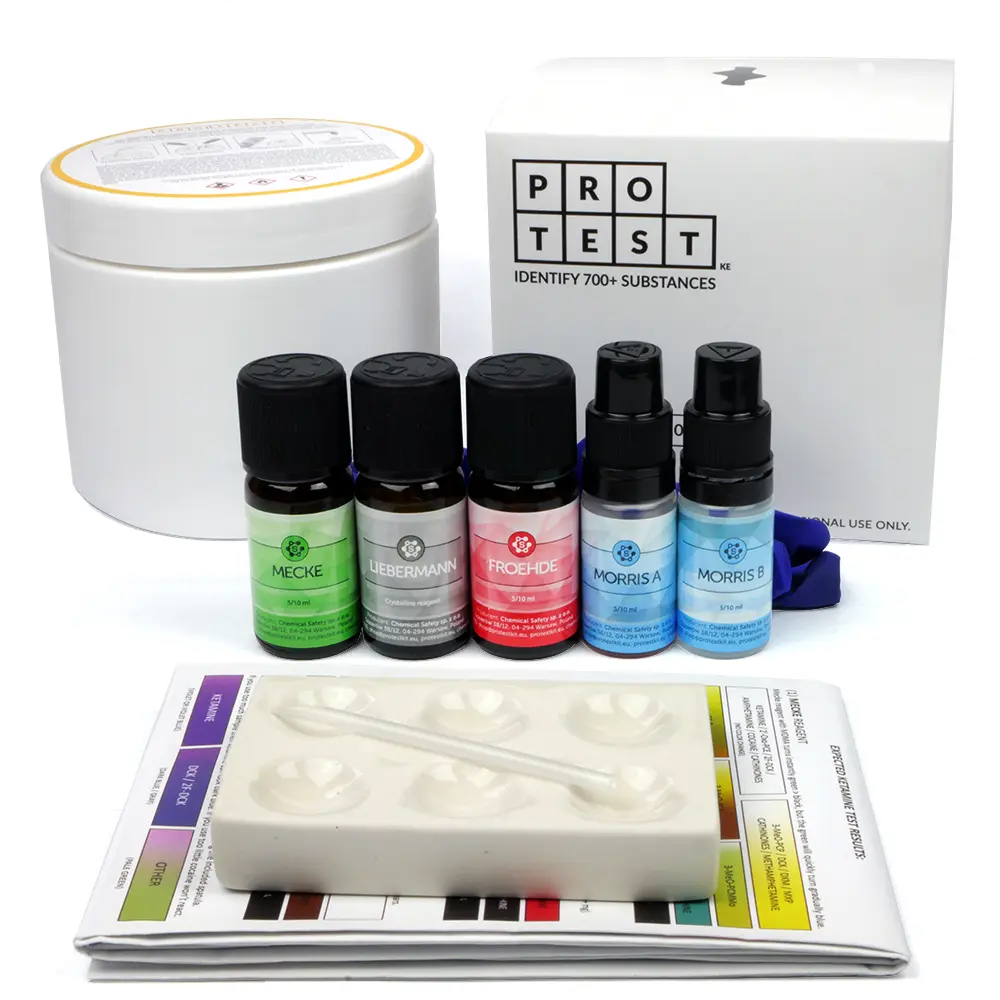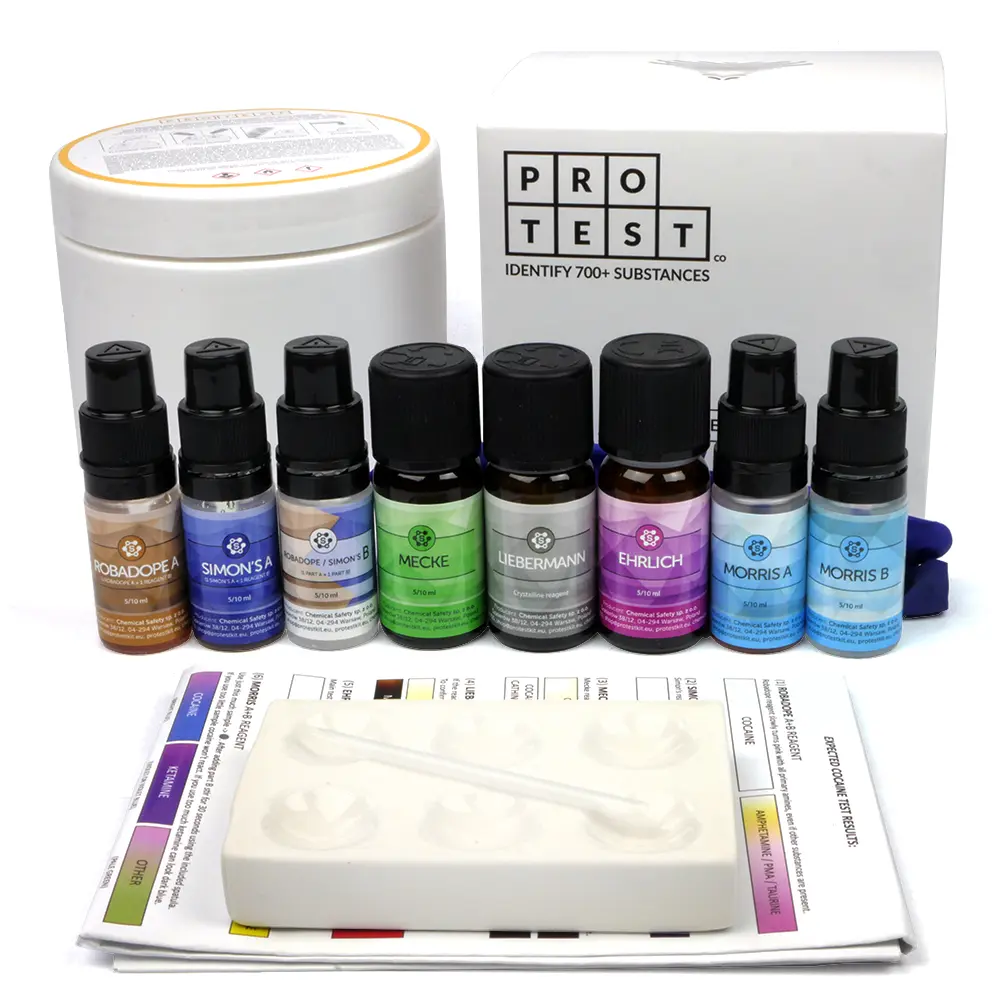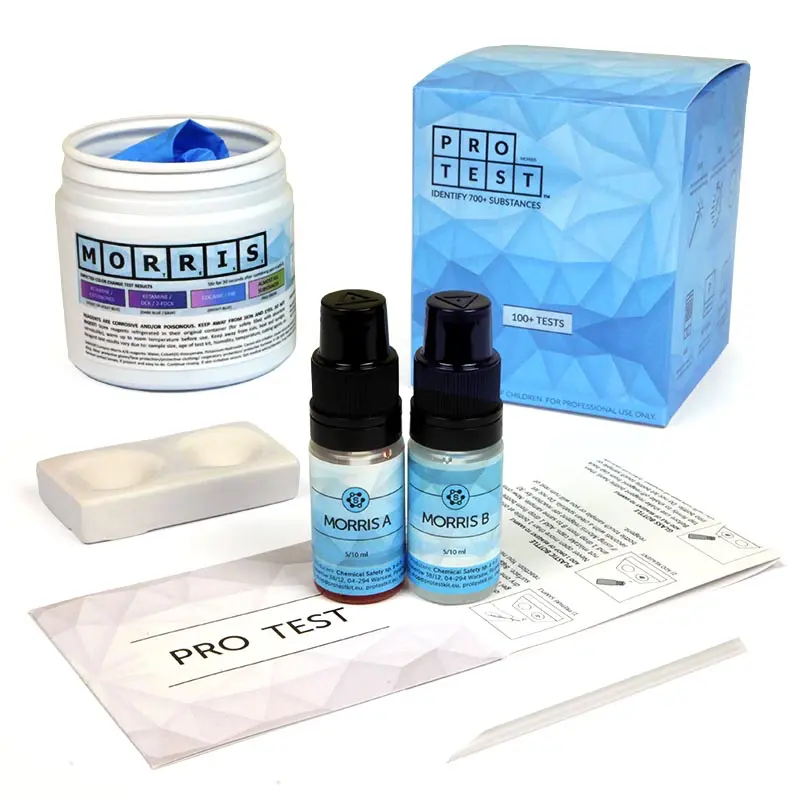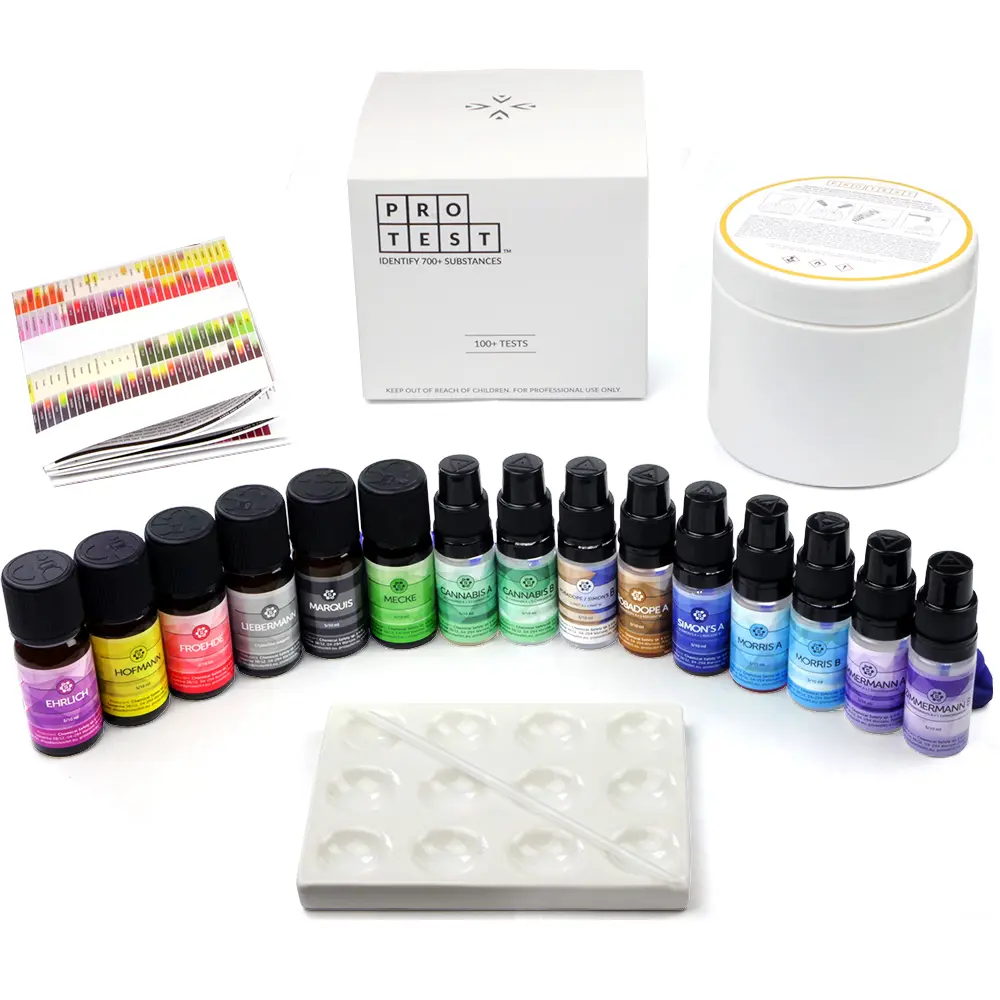Is Mandelin reagent reliable?
What is Mandelin reagent?
Mandelin reagent (sometimes incorrectly called Medelin reagent or Mendelin reagent) is one of the most popular colorimetric reagent tests for identifying psychoactive compounds. Despite its popularity we have decided to discontinue it in light of several major quality concerns explained in the article below.
The Mandelin reagent serves as a straightforward spot-test for preliminary identification of alkaloids and other compounds. It consists of a blend of ammonium metavanadate and concentrated sulfuric acid. Its primary purpose is to detect ketamine and PMA. Unlike more commonly used reagent test chemicals, it exhibits a deep red hue that transitions to yellow in the absence of alkaloids, typically occurring within approximately 48 hours after mixing.
The method endorsed by the United States Department of Justice for producing this reagent involves adding 100 mL of concentrated (95–98%) sulfuric acid to 0.5-1 g of ammonium metavanadate. This reagent was originally developed by the German pharmacologist Karl Friedrich Mandelin (1854–1906) during his tenure at the University of Dorpat.
The typical use cases for Mandelin reagent are:
- Testing cocaine
- Test ketamine
- Testing amphetamine
- Testing methamphetamine
- Testing MDMA
Advantages of Mandelin reagent
Qualities of Mandelin reagent are as with any other reagent determined by the unique color change reaction it can display. One of the most common use cases for Mandelin is testing MDMA and MDA, which causes an instant black color change, similar to those of Marquis and Mecke tests. These three can be referred to as „3 M” reagents, which although convinent to remember is mostly a testimony to how redundant Mandelin is.
There is basicaly only one scenario in which Mandelin reagent excelles. That is detecting PMMA or PMA in amphetamine and methamphetamine. Because Mandelin reacts dark brown to PMA and PMMA, but green to amphetamines, it can detect these dangerous compounds even if mixed with meth/amphetamine.
Testing for PMA and PMMA unfortunately makes Mandelin test only marginal useful for screening classic stimulants, as both of the mentioned compounds are largely gone from the market. Other especially risky substances have taken their place, such as cathinones or fentanyl (see fentanyl test strips) which makes even this particular use case of Mandelin not worth the disadvantages.
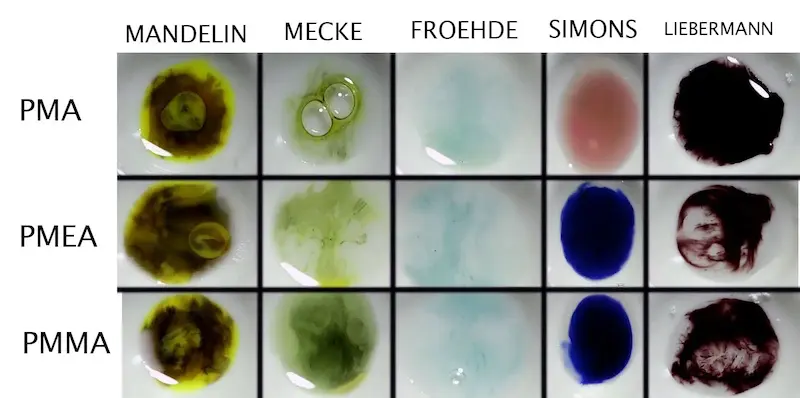
Mandelin reagent color chart for PMA, PMMA and PMEA
Disadvantages of Mandelin reagent
What are the disadvantages of Mandelin reagent? These are numerous. First of all, false positives. As written in classic Clarke’s Analysis of Drugs and Poisons textbook, spot test Mandelin turns orange with (almost) all hydrochloride salts.
Effects of ionic form
Salts may give different colours to those of the corresponding acid or base. In general, free acids or bases that have been isolated from the test material by an extraction process give better colours than their salts. The colour of a salt may be modified by the nature of the other ions present. For example, all hydrochloride salts give a red colour in Mandelin’s test and a blue colour with Koppanyi–Zwikker reagent (prior to adding pyrrolidine).Basic salts of weak acids may produce different colours because of a change in pH. Where a compound has been extracted from biological material these factors should not create any difficulty, since it will be present in the form of the base. However, when applying the tests to pharmaceutical preparations, where the compounds are usually present as salts, this can cause problems.
In our reagent testing app database we have over 300 compounds that turn Mandelin to some shade of orange or brownish. To make things worse, Mandelin’s reactions seem to be very sample size dependent. Too little of a sample and results might disipate, see below photos from Slovenian police forensics (source: https://www.policija.si/apps/nfl_response_web/seznamColors.php):
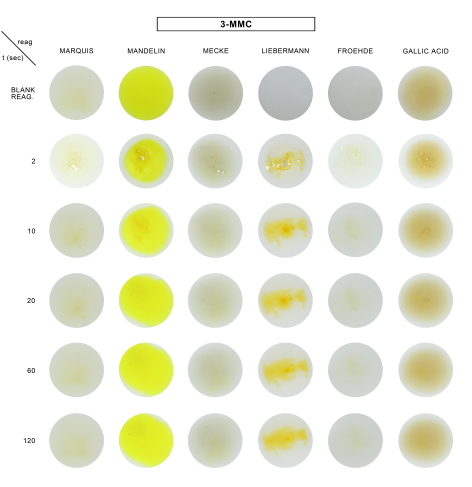
3-MMC reagent testing color chart
Mandelin test is often recommended for cocaine and ketamine because of the orange color change it causes, but as we already metioned that is a misleading assumption to say the least. Not only are these color change reactions far from unique, results are often inconsistnt. On public lab results website drugsdata.org plenty of Mandelin reactions are greenish. It is not certain why is that, but Mandelin does turn gree on itself in storage. Which brings the next issue, shelf life.
Mandelin’s reagent can be characerized by extremely short shelf life. It is not unheared of to see it already arrive from transit with signs of going bad, especially in the summer. If your Mandelin reagent is green to begin with you need a new reagent, preferebly a better one such as Morris reagent in a multi-reagent kit, to further reduce the risk of inclonclusive results (both false positives and false negatives).
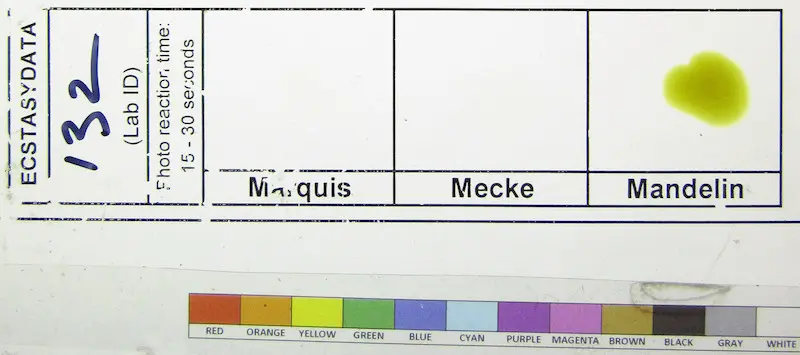
Testing 4-MMC with Marquis reagent, Mecke and Mandelin
When should Mandelin reagent be used?
Mandelin reagent should never be used at all, unless testing specifically methamphetamine or amphetamine for PMA and PMMA (or PMEA). If you are looking to test ketamine or cocaine, get Morris reagent (which is a modified Scott’s test). Morris gives a color between purple and violet with small amounts of ketamine and a bright strong blue with cocaine. It is not completely free from falspe positives so make sure you have additional reagents in your ketamine test kit or cocaine test kit.
If you are testing MDMA or meth/amphetamine, stick to other reagents such as Marquis, Mecke and Simon’s to name a few, remembering that it’s required to use at least 2 different reagents to increase analysis precison. To confirm presence of MDMA you can use Marquis, Mecke, Liebermann, Froehde and Simon’s, same for methamphetamine. Mecke and Froehde reagent can also detect PMA, PMMA and PMEA mixed in amphetamine or methamphetamine.
Cocaine and ketamine reagent tests:
A positive or negative test result does not indicate if the substance is safe. No substance is 100% safe.
